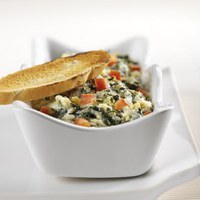Enjoy Milk Breaks During June, National Dairy Month
(Click an image below to view a high-resolution image that can be downloaded)
By Julie Garden-Robinson, Food and Nutrition Specialist
NDSU Extension Service
“Mom, milk break is done this week at school, so I will need something to drink and 24 birthday treats to share with everyone because my birthday is in the summer. Why does my birthday have to be in the summer, anyway?” my 8-year-old daughter exclaimed.
I think she delivered all this “end of the school year” and “don’t forget my birthday” information in one breath.
“Sure, we can buy a snack for an early birthday party at school,” I replied.
“We can have milk breaks at home, too,” I added. “Did you know that a cow drinks 30 to 50 gallons of water a day? That would fill a very large bathtub.”
She looked at me and asked: “Why didn’t you tell my classmates that interesting information when you visited my class?”
“I didn’t think of it. Did you know a cow produces enough milk to fill six gallon-sized jugs a day?” I queried.
“OK, that’s nice. Remember, I need 24 birthday snacks,” she reminded me.
I guess she was tired of hearing cow trivia, but I was having fun pestering her with questions.
“I have a joke, too. What do you call cheese that isn’t yours?” I asked.
She shook her head but looked at me intently. I could almost hear her thinking: “This had better be good.”
“Nacho cheese,” I replied.
She must have liked the joke because she immediately repeated it to her older sister.
Although the school year is over, milk breaks make good sense for growing children and health-conscious adults. If not a milk break, how about a mozzarella cheese stick break or a yogurt parfait break this summer?
Children and adults benefit from the protein, vitamins and minerals found in milk and other dairy products. Dairy products are notable sources of calcium and most also provide vitamin D. About 60 percent of preteens and 70 percent of teens do not meet the calcium recommendations needed to grow and maintain strong bones.
Most teens, older children and adults need at least 3 cups of milk or the equivalent daily. Children ages 4 to 8 need about 2.5 cups, and children ages 2 to 3 need 2 cups. One cup of yogurt and 1.5 ounces of natural cheese each count as 1 cup of milk.
During June, National Dairy Month, consider these tips:
- Drink low-fat (1 percent milk) or fat-free (skim) milk. The calcium content is about the same regardless of the type of milk. The only difference is in the amount of fat and calories.
- Top your cereal with low-fat or fat-free milk. Add a dollop of low-fat plain yogurt to a baked potato.
- Choose cheese with less fat by looking for “reduced fat” or “low fat” on the label.
- Save calories by swapping fat-free evaporated milk for cream and ricotta cheese as a substitute for cream cheese. Cream cheese, cream and butter do not count toward to the dairy group recommendations.
- Be cautious about flavored milks, puddings and frozen yogurt. They are fine as occasional treats, but they contain extra calories from the sweeteners and other flavorings.
Some people cannot digest the lactose (natural sugar found in milk) and experience gastrointestinal problems as a result. If you are lactose-intolerant, try soy milk, lactose-free milk or the tablets that can be added to milk to digest the sugar prior to you drinking it. Some people with lactose intolerance can eat yogurt, or they can drink small amounts of milk with meals.
Be sure you are meeting your calcium and vitamin D needs through foods or with help from dietary supplements. Read nutrition facts labels to know what your other sources are of calcium, vitamin D and other nutrients.
Here is an easy calcium-rich snack or appetizer recipe courtesy of the Midwest Dairy Association. Pair this colorful, tasty recipe with whole-grain crackers, carrot sticks or celery sticks.
Baked Spinach and Artichoke Yogurt Dip
1 (14-ounce) can artichoke hearts, drained and chopped
1 (10-ounce) package frozen chopped spinach, thawed and drained
1 (8-ounce) container plain low-fat yogurt
1 c. shredded low-moisture part-skim Mozzarella cheese
1/4 c. green onion, chopped
1 garlic clove, minced
2 Tbsp. red bell pepper, chopped
Combine all ingredients except red bell pepper and mix well. Pour mixture into a 1-quart casserole dish or 9-inch pie plate. Bake at 350 degrees for 20 to 25 minutes or until heated thoroughly. Sprinkle with red peppers.
Makes eight servings. Each serving has 80 calories, 3 grams (g) of fat, 7 g of carbohydrate, 1 g of fiber, 220 milligrams of sodium and 20 percent of the daily value for calcium.
(Julie Garden-Robinson, Ph.D., R.D., L.R.D., is a North Dakota State University Extension Service food and nutrition specialist and associate professor in the Department of Health, Nutrition and Exercise Sciences.)
NDSU Agriculture Communication – May 31, 2012
| Source: | Julie Garden-Robinson, (701) 231-7187, julie.garden-robinson@ndsu.edu |
|---|---|
| Editor: | Rich Mattern, (701) 231-6136, richard.mattern@ndsu.edu |




